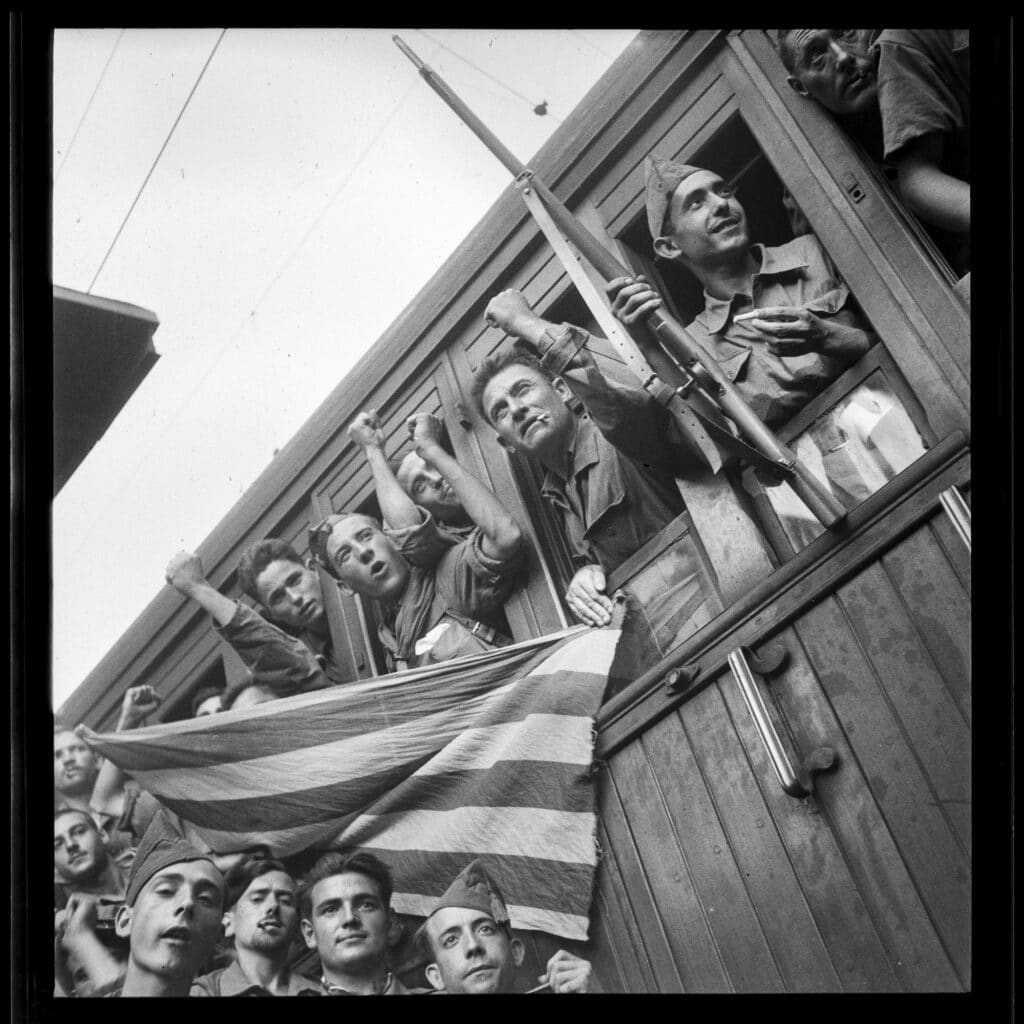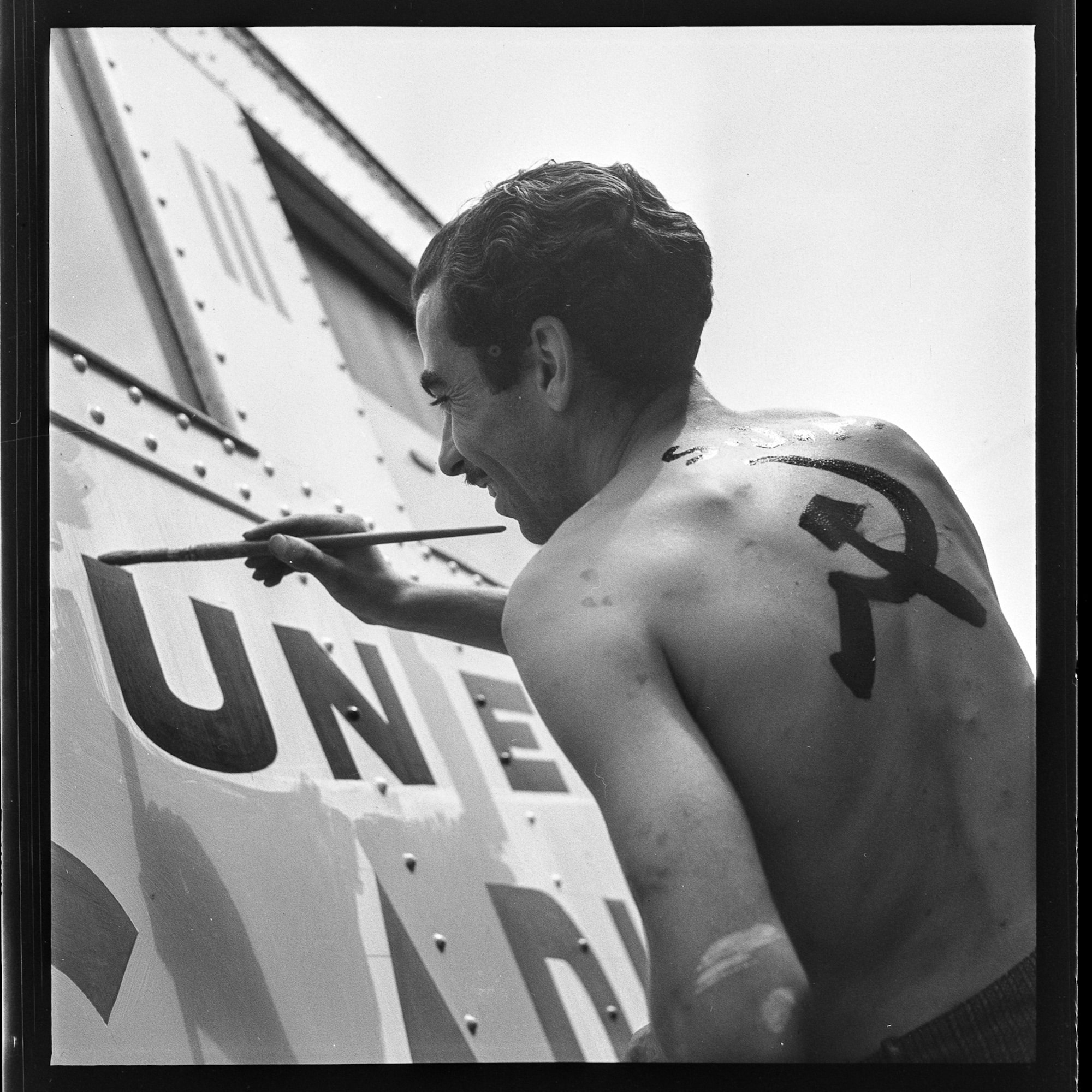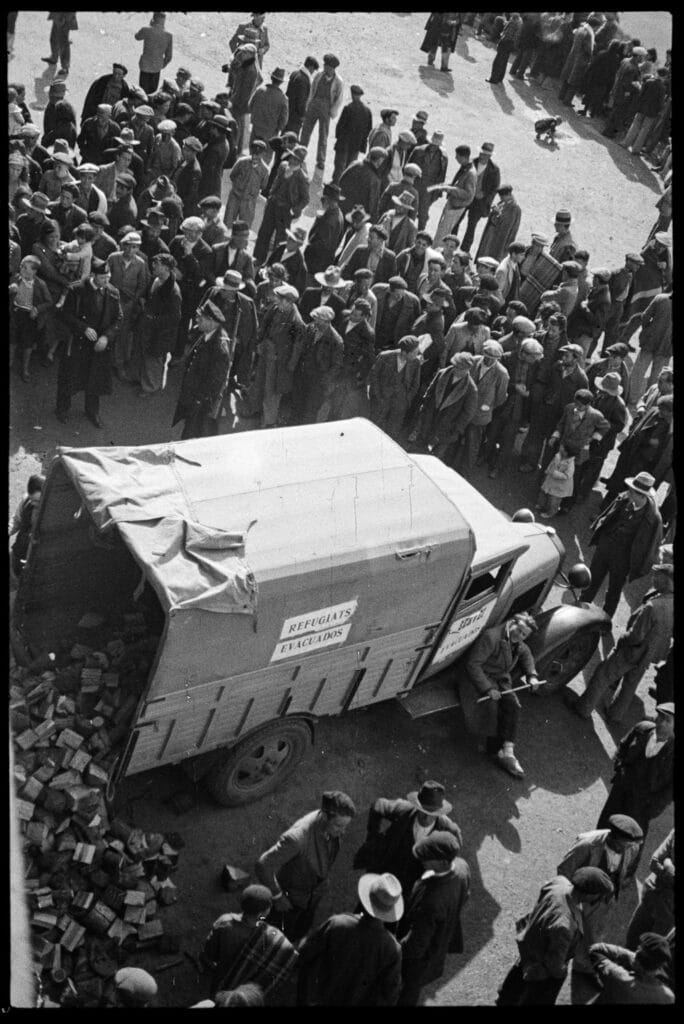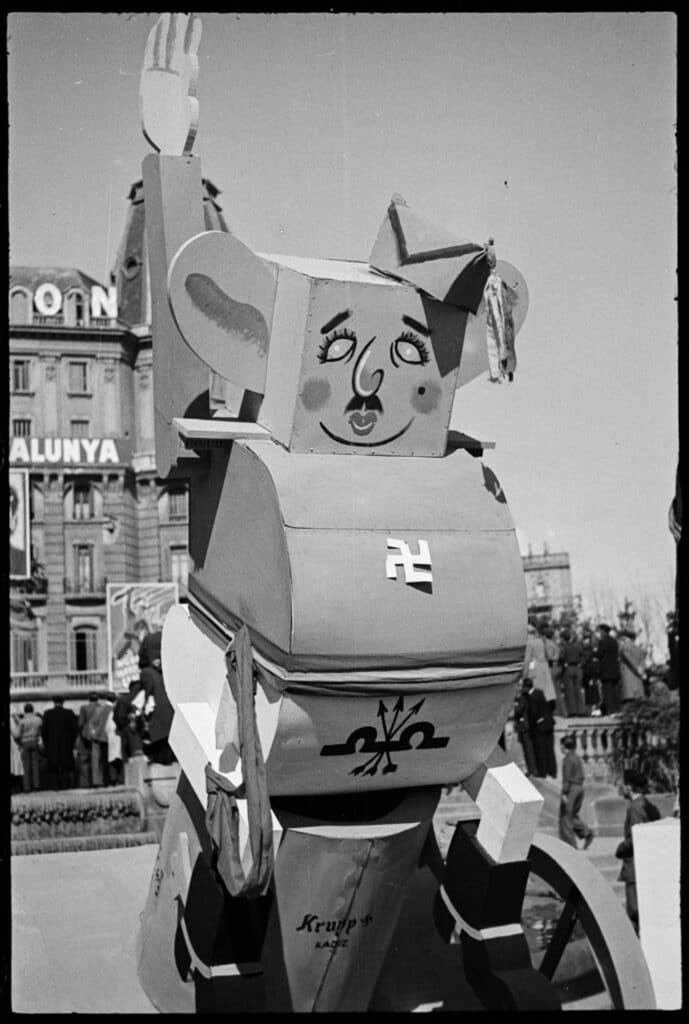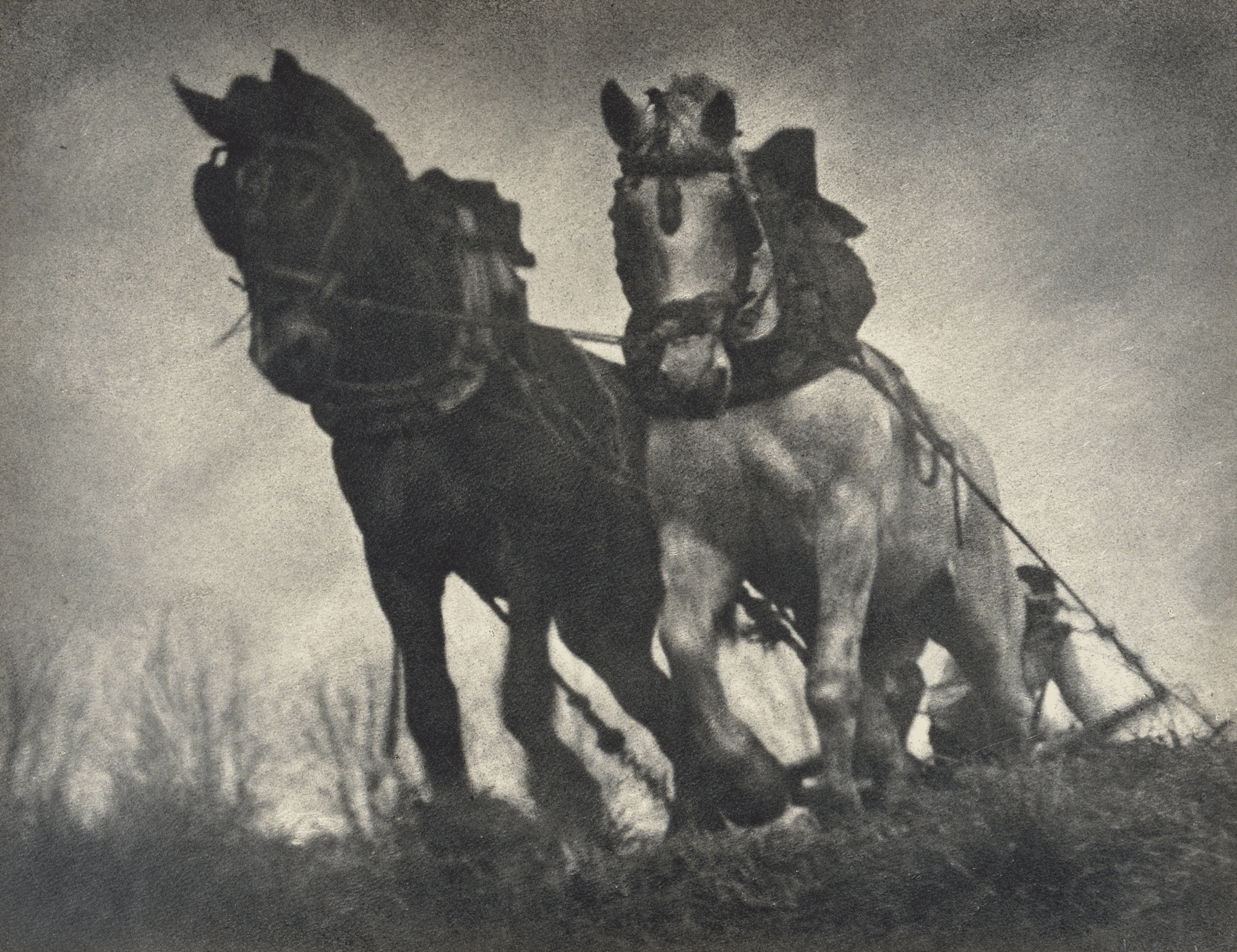The story is a paradox. Photographer Antoni Campañà (1906–1989) was known for an oeuvre he did his best to keep buried. “If my grandfather had been here, he wouldn’t have approved of this exhibition,” confirms the grandson Toni Monné Campañà at the opening of the exhibition Antoni Campañà: Hidden Icons, the Unknown Images of the Spanish War (1936–1939) at the Pavillon Populaire, the City of Montpellier’s photography space.
There is a romantic side to the story. Just as we’ve had Robert Capa, David Seymour (aka Chim), and Gerda Taro’s “Mexican suitcase,” we now have Campañà’s red box. Or rather, the two red boxes—two boxes containing over 5,000 prints and negatives of the Spanish War (1936–1939). But this historical treasure trove was never meant to be put on display.
The author of these photographs did not want to reopen the wounds of the Spanish Civil War. Since the rediscovery of these photos in 2018 in the family home garage, there has been a book publication (La Boîte rouge) and a major exhibition organized in Barcelona. However, the photos had never before been shown in France.
So why go against Antoni Campañà’s wishes? “It’s essential that we show these images today,” insists Toni Monné Campañà. These forgotten archives are considered “the last photographic treasure of the Civil War”—as emphasized by the Catalan daily La Vanguardia—and are of great interest in terms of the coverage of the conflict. “At a time when information is being threatened by algorithms, it’s very important to rediscover and show works like these,” notes Gilles Mora, artistic director of the Pavillon Populaire.
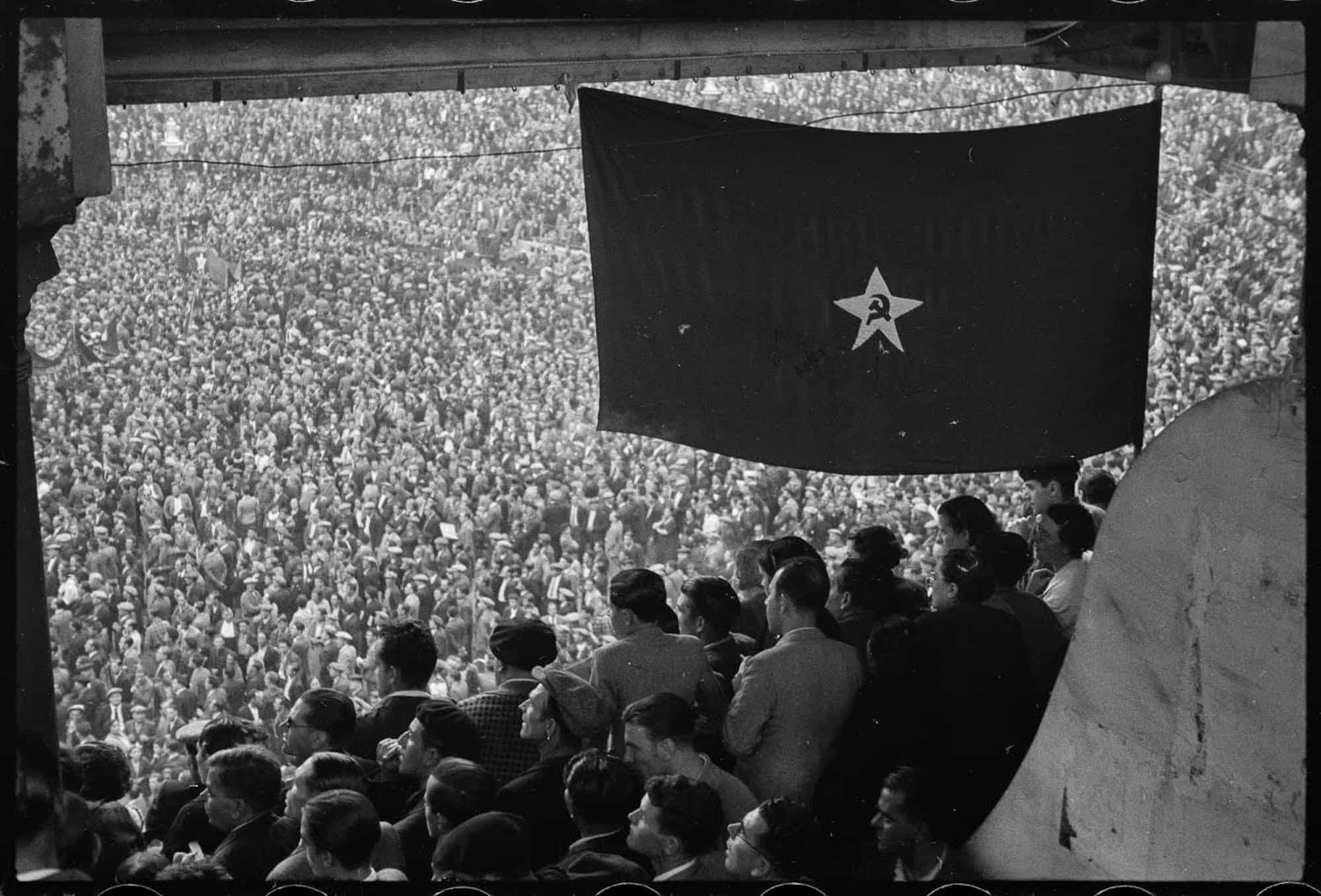
An artist at war
Born in 1906, Antoni Campañà was a precocious photographer. “It was his second nature,” says his grandson. Campañà began photographing at the age of nine. By the age of 12, he was already selling prints, and at 14 he even produced a report on King Alfonso XIII for a Spanish magazine.
When the Civil War broke out, Campañà was thirty. He was already recognized as a major Spanish pictorial photographer. During his honeymoon in 1933, he attended seminars given by the German photographer Willy Zielke, and even embarked on a career as a sports photographer.
“Campañà takes photos without any underlying ideology. For him, this work as above all a form of therapy”
Campañà has an artist’s touch, rather unlike the approach of photojournalism, as his photos attest. They tell the story of an artist thrust into war. “You’re not seeing a representative of war photojournalism like Robert Capa; rather, you’re seeing an art photographer who experienced the war in the most devastating way, in his native city of Barcelona,” observes Gilles Mora.
Arnau Gonzàlez i Vilalta, professor at the Autonomous University of Barcelona (UAB) and curator of the exhibition, adds a key factor to the understanding of the wealth of this collection: “Campañà takes photos without any underlying ideology. For him, this work as above all a form of therapy.”
A photographer of complexity
A Republican, democrat, Catalan nationalist, and fervent Catholic, Campañà produced a unique body of work on the Civil War: he covered the entire conflict without glossing over the horrors committed on either side; and through images expressed his deep pain at seeing his country being torn apart. “He photographed the unvarnished reality and played into neither the Republican nor the Francoist propaganda. Robert Capa and Gerda Taro had an ideological vision of the conflict. Campañà was a photographer of complexity, a Moses of photography, who found himself between the parted waters,” notes Arnau Gonzàlez i Vilalta.
Campañà took to the streets of Barcelona to cover the attempted military coup of July 1936, just as he immortalized the social revolution led by the anarchists. He didn’t hesitate to photograph the anarchist militia’s iconoclastic rage against Catholic symbols. This resulted in harsh images rarely shown in exhibitions on the conflict: corpses of nuns taken out of their coffins and displayed in the square before the horrified gaze of Barcelona residents.
Campañà, who always carried a small lead Virgin in his pocket and another around his neck, would roam the ransacked buildings of the Rambla, such as the churches of Betlem and Santa Maria del Pi or the bunkers of del Carmel, with his compact Robot-brand camera; he was the only one to capture the destruction of a Gothic arch of the Santa Anna church in Plaça de Catalunya.
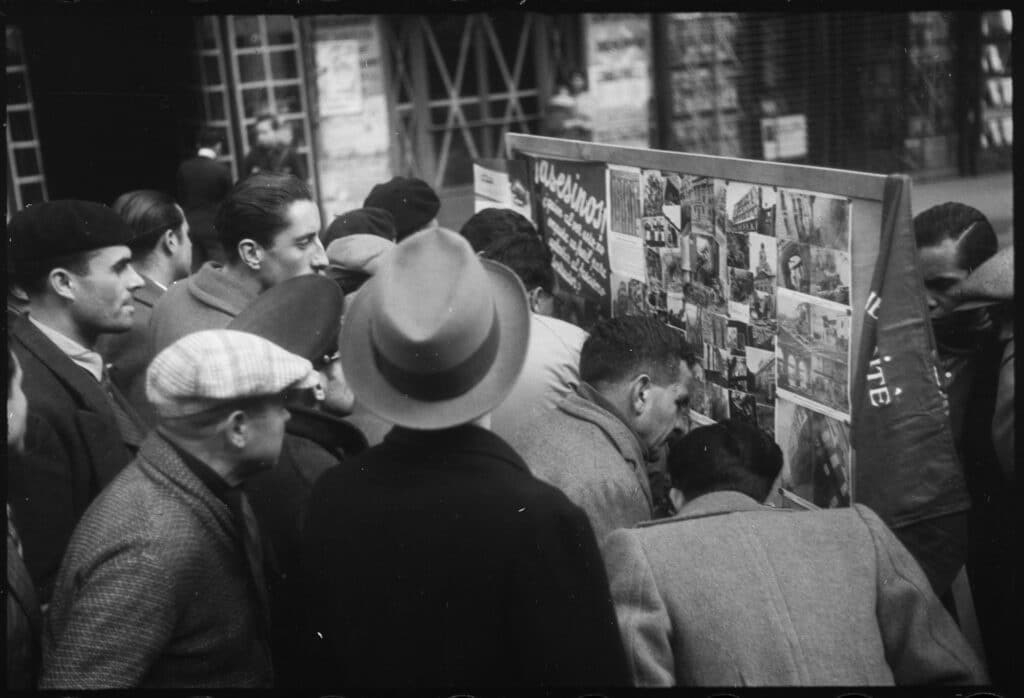
A few months later, however, Campañà produced a series of portraits for the Propaganda Commissariat of the FAI-CNT, the Iberian Anarchist Federation, most of them taken in Barcelona’s Caserna del Bruc—renamed Caserna Bakunin, after the Russian philosophical father of anarchism. Equipped with a Rolleiflex, Campañà created iconic portraits that earned him several international prizes: these were his only images of the war shown at international competitions.
Spread across two floors, the Montpellier exhibition follows the chronology of the conflict as captured in Campañà’s photographs. Barcelona’s Plaça de Catalunya emerges as the historic stage for regime change. The photographer’s coverage of the entire conflict in the city encourages disturbing comparisons to be made between 1936 and 1939: Franco’s troops were found to tread the same spot where People’s Republican Army had proudly marched, only a few years earlier.
Between the two photos, the square and the buildings had not changed, but the banners were no longer the same, the signs were different, and the procession of the Christ of Lepanto to the cathedral had replaced the giant portraits of Lenin from the days of communist Barcelona.
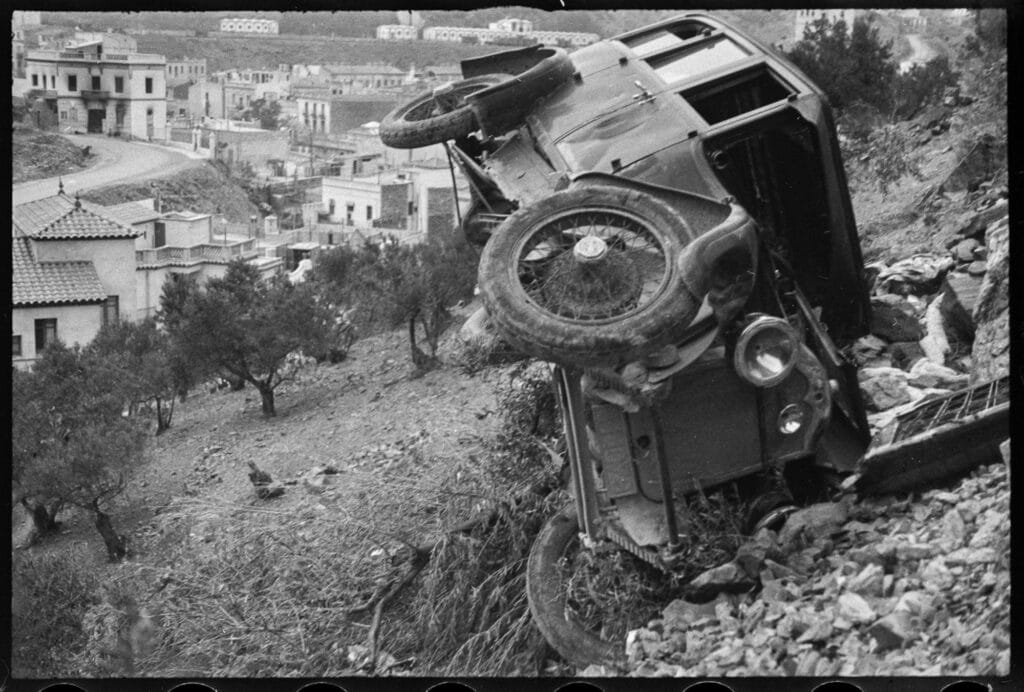
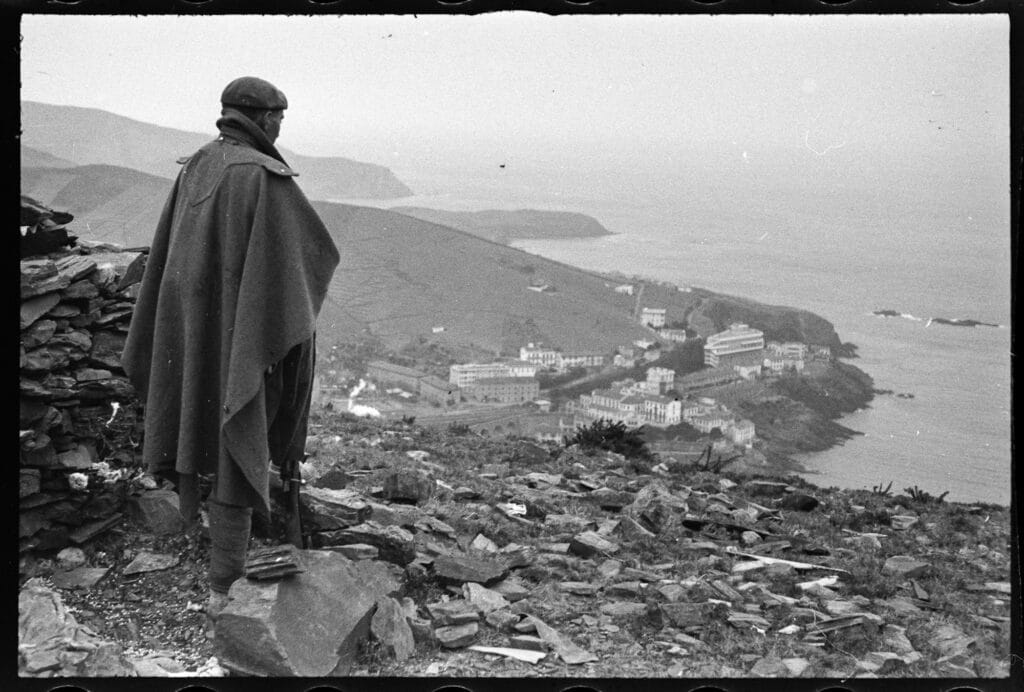
Campañà’s icons
Campañà also captured the daily life of the inhabitants, from hunger and lines for food to air raids and refugees fleeing southern Spain. Some of his shots were widely used, and even misappropriated, by opposing camps, including the superb portrait of a mother in Barcelona, a refugee from Malaga, shielding her child, her gaze tense with worry. The image, which made the rounds of the national and international press, was even used to denounce the bombing of Guernica.
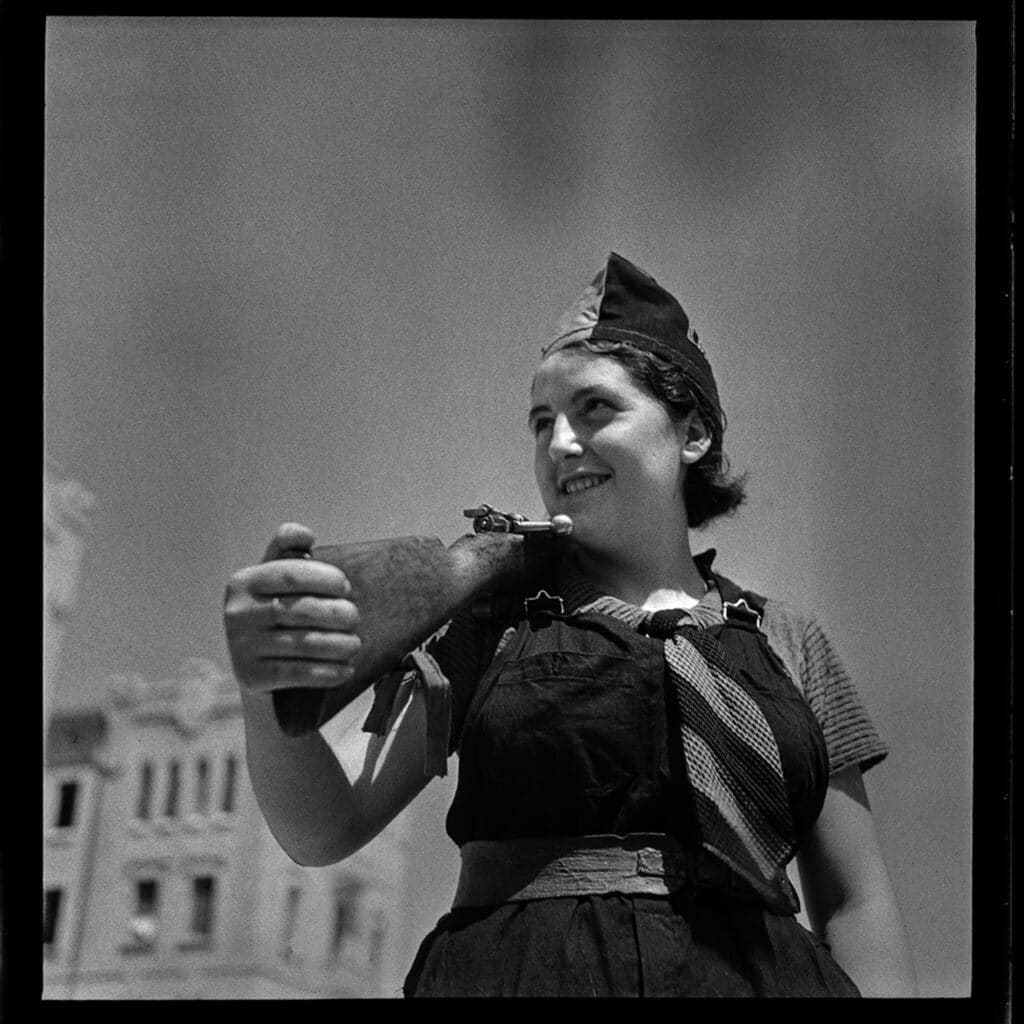
To Toni Monné Campañà, his grandfather’s “most touching” photo remains the portrait of a young anarchist militiawoman “who became an icon of the struggle.” Perched on a Barcelona barricade in the heat of summer 1936, this young woman is seen brandishing the anarchist flag of the CNT-FAI. Nicknamed by the curators “Liberty Guiding the People of the Spanish Civil War”—in evocation of Delacroix’s painting—the Barcelona Madonna had, until now, been anonymous.
The Montpellier exhibition reveals her name for the first time: Anita Garbin Alonso. Her son, Joseph Lumbreras d’Anita Garbin, present at the inauguration, confides his emotion at seeing his mother’s story told in this way. Born in Andalusia in 1915, she died in 1977 in Béziers, France, where she had been exiled.
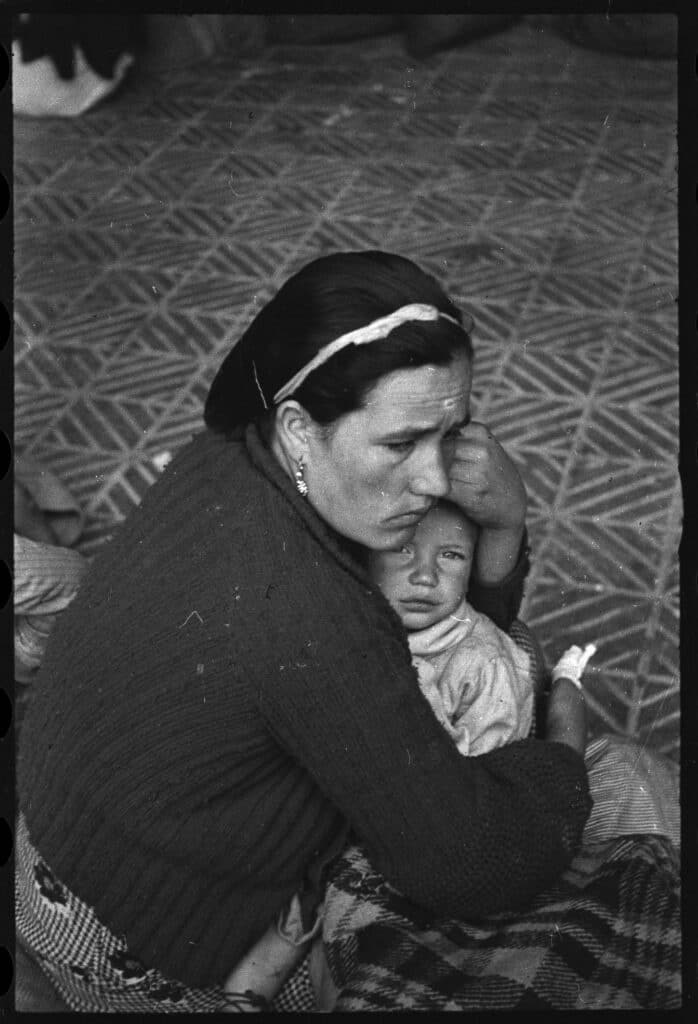
Campañà saw his photographs, of undeniable artistic sensibility, used against his will for propaganda purposes. Because he photographed both the Republicans and the Francoists, both sides ended up exploiting his photos at will.
When the war had ended, his friendship with Francoist military photographer José Ortiz Echagüe enabled him to continue his career as a photographer, even though he had been a member of the Republican army. Campañà refused to hand over his wartime negatives to the authorities, and kept a photography shop until 1953.
Throughout these years, he never showed any of the 5,000 prints and negatives of the Spanish War to anyone and kept them hidden away in two red boxes. Like a Pandora’s box, they concealed the trauma of a country, with all the complexity and horror of a civil war, the wounds of which have not fully healed even eighty years on.
Exhibition: Antoni Campañà: Hidden Icons, the Unknown Images of the Spanish War (1936–1939, Pavillon Populaire, Montpellier, until September 24, 2023.
Book: La Boîte rouge: Le dernier grand trésor photographique de la Guerre d’Espagne d’Antoni Campañà, Seuil, €32, 332 pp.

